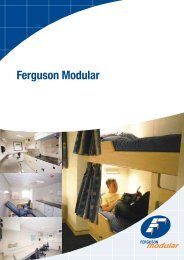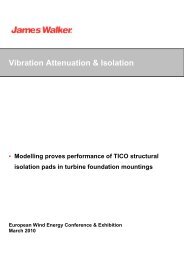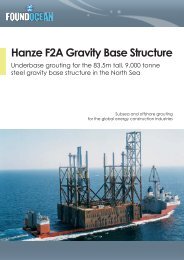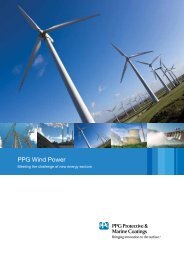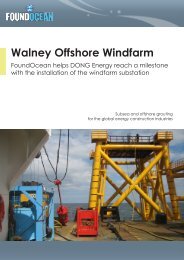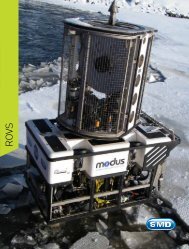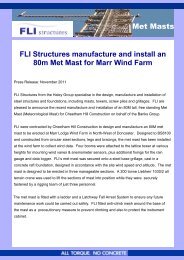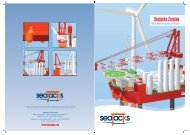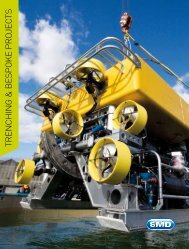UNEXPLODED ORDNANCE - Wind Energy Network
UNEXPLODED ORDNANCE - Wind Energy Network
UNEXPLODED ORDNANCE - Wind Energy Network
Create successful ePaper yourself
Turn your PDF publications into a flip-book with our unique Google optimized e-Paper software.
RISK MANAGEMENT<br />
Figure 3: “Tiger in Cage” Bow-Tie<br />
So where do Bow-Ties fit in<br />
Bow-tie diagrams can be generated for<br />
every hazard identified for any particular<br />
operation at any point in its life cycle.<br />
However, it is clearly not appropriate,<br />
efficient or cost effective to construct<br />
diagrams for all identified hazards. Bowtie<br />
diagrams are most commonly used,<br />
and realise the largest benefit in analysing<br />
major hazards.<br />
The Risk Assessment Matrix, discussed<br />
in a previous issue (see February/March<br />
2012), can be utilised as a “screening” tool<br />
to identify major hazards requiring further<br />
investigation, with bow-tie diagrams clearly<br />
identifying the controls/mitigations against<br />
such hazards.<br />
Limitations of the Bow-Tie Method<br />
Of course bow-ties are not the panacea<br />
for all risk management problems. If<br />
you want to quantify your level of risk in<br />
absolute terms then the bow-tie method<br />
will not help directly. Similarly, if you want<br />
to model complex inter-relationships<br />
between your risk controls, there are<br />
better ways than using bow-ties.<br />
As with all risk assessment techniques,<br />
the quality of the information output is<br />
dependent on the quality of the individuals<br />
leading the workshops/assessment and<br />
the team assembled to assist. The danger<br />
exists that, due to the apparent simplicity<br />
of the bow-tie diagram, such assessments<br />
are undertaken by inexperienced<br />
personnel and without the direct input<br />
from all involved parties (operations,<br />
maintenance etc.). In such a scenario,<br />
bow-ties could be generated which do not<br />
represent the on-site operations and omit<br />
key threats, consequences or controls.<br />
In summary, a number of differing<br />
techniques are available for assessing<br />
risk. However if you want to remove<br />
the mystique of risk management and<br />
obtain insights into your risk controls<br />
that are easy to understand and easy<br />
to communicate, then there is no better<br />
method than bow-ties.<br />
James Sneddon<br />
Risktec Solutions Ltd<br />
www.risktec.co.uk<br />
Click to view more info<br />
www.windenergynetwork.co.uk<br />
57



